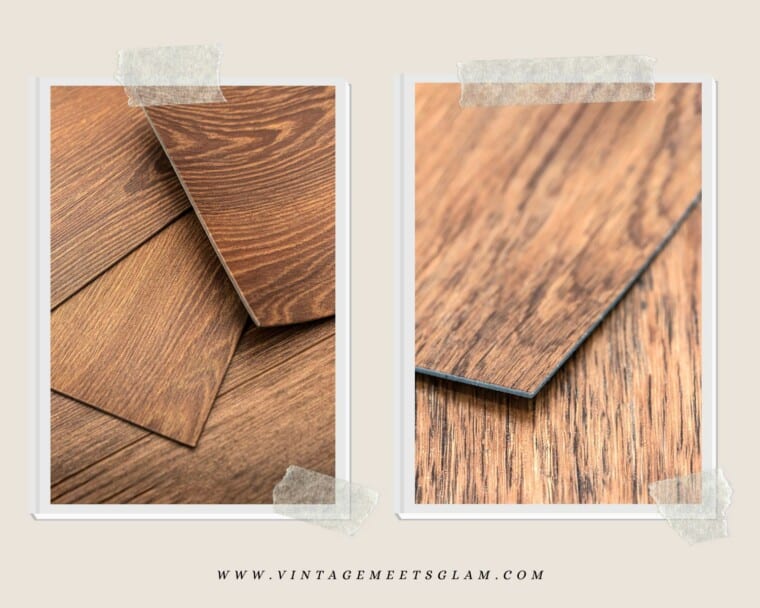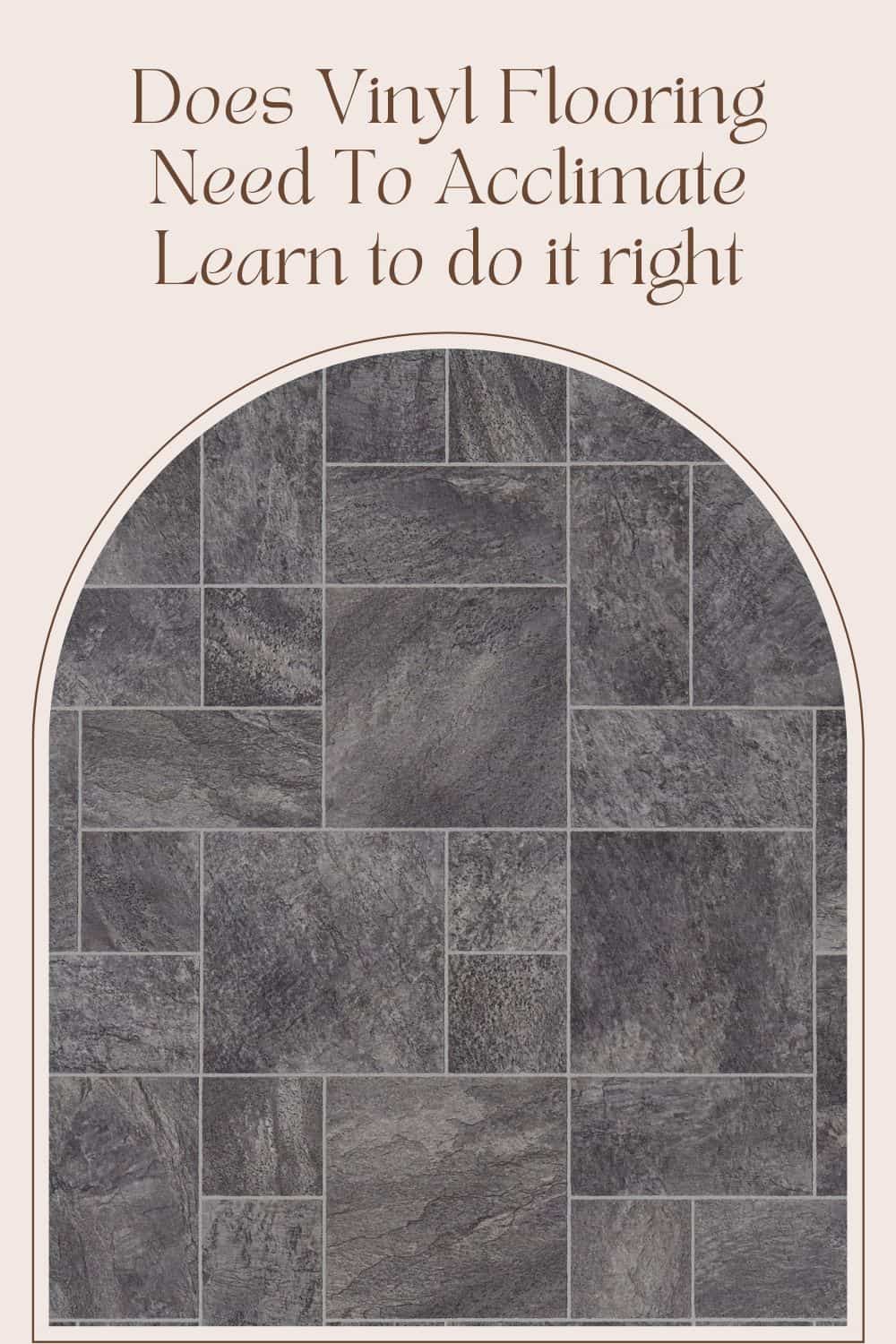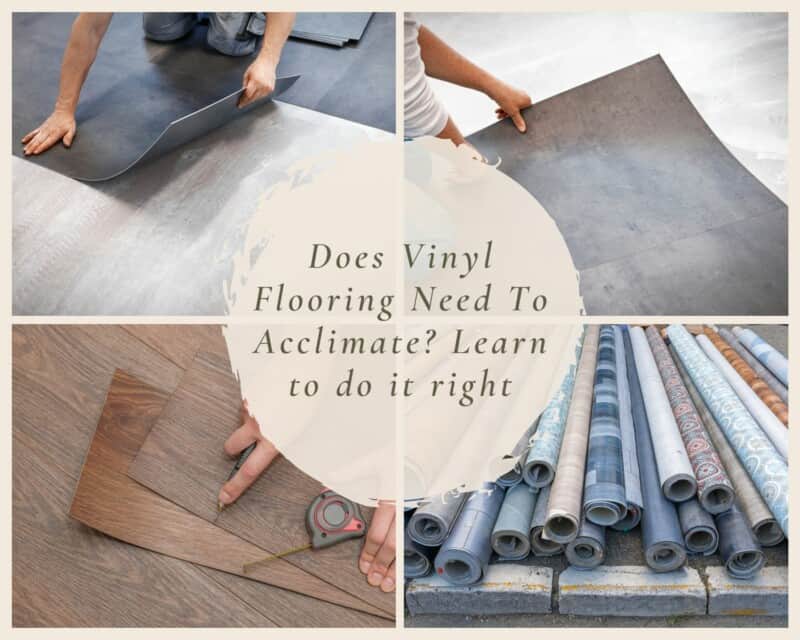Vinyl flooring is an excellent option for homeowners looking to add value and style to their homes without breaking the bank. But you may not be aware that this flooring needs time to acclimate before it can be installed. Here’s what you need to know about acclimating vinyl floors:
What Happens If You Don’t Acclimate Vinyl Flooring?
It will warp and crack if you don’t acclimate your vinyl flooring. That’s because the mesh is not perfectly flat, so it can’t support itself evenly on all sides of the board. Therefore this unevenness makes it more likely for cracks to develop in your new flooring.
Not only does not acclimating vinyl flooring create these issues, but it also means that when you install new ones later down the road, you’ll need to re-caulk them before using them again.
How Long Does Vinyl Flooring Need to Acclimate
Your vinyl flooring will need to acclimate to the temperature of your home. This can vary by manufacturer, but most vinyl floors take 24 hours or less before they are ready for use.
Some manufacturers recommend that you allow their floors to sit for up to 72 hours after installation before moving furniture. It’s important to note that there can be differences between manufacturers’ recommendations and what is best to practice in certain situations. For example, if you live near an airport with high humidity levels during summer months, then waiting 72 hours may be beneficial. It may be because the humidity will help keep your room at a comfortable temperature all year round!
Can You Put a Refrigerator on Vinyl Plank Flooring?
The answer is no; you cannot put a refrigerator on vinyl plank flooring. This is because the steel and plastic parts of your fridge will scratch the flooring surface and create unsightly scratches over time. You’ll need to choose another place to store your food items under your kitchen counter.
Which Vinyl Flooring Types Require Acclimatization?
Vinyl plank and tile are two common types of vinyl flooring that require acclimatization. These products can be installed on concrete or wood subfloors without any problems, but they will not work well if installed on other surfaces. For example, laminate floors are not compatible with these products because they contain glue that causes friction between the layers. It occurs during installation, causing them to wear faster than other materials.
Vinyl composition tile is also a poor fit for many homeowners because it contains fine particles that do not provide enough traction for walking barefoot on floors. Therefore, it’s essential that you first use pads before walking across your newly installed surface, so you don’t slip!
How to Acclimate Vinyl Flooring
Place your vinyl flooring in a room with the same temperature as the room you will install it in. This allows for a proper acclimation of the vinyl, which can only happen if there is no difference between both rooms’ temperatures.
Leave your new flooring in this new room for 24 hours, during which time you should not walk on it or touch any part of it. You can wear socks or shoes without grip while walking across your newly installed vinyl tile flooring. However, make sure they don’t have laces or ties that could catch on any sharp edges!
After waiting 24 hours since placing your vinyl tiles down, feel free to start stepping around with bare feet. Just make sure not to get too close, though. If anything sticks out more than usual, just pull gently until satisfied.

Does Room Temperature Matter?
Room temperature is a factor in the adhesion of laminate flooring. The glue used in laminate flooring is activated by moisture, so it can be challenging to get a good bond if you are installing your new laminate flooring on a wet surface. The best way to ensure that your laminate floors will not become slippery is to acclimate them slowly.
The easiest way to do this is by placing the first layer of laminate on top of a baseboard or underlayment, then applying the second layer after it has dried completely. If you’re replacing an existing wood floor, use rags or paper towels to clean up any residual dust before laying down the first layer of flooring.
When Can You Start Walking on Vinyl Plank Flooring?
When you are installing vinyl plank flooring, it is recommended that you wait until the flooring has been adequately acclimated before walking on it. The reason for this is to avoid any damage to your feet and potentially lead to a trip or fall. Once the vinyl plank has been installed, you can start walking on it immediately!
When vinyl planks acclimate, they will contract and expand. The space between the boards is called a gap. This gap is a good thing because there will be no cracking from moisture or temperature changes.
What are the Different Types Of Vinyl Flooring
There are two main types of vinyl plank flooring available today: SPC (stone plastic composite) and WPC (wood plastic composite). Both are similar in their composition but differ slightly in terms of quality and cost. This is due to differences in manufacturing processes used by each manufacturer; however, both offer high-end quality at affordable prices!
Vinyl flooring is one of the most popular choices for homeowners because it’s easy to install. However, you might be surprised to learn that several types of vinyl flooring are available to choose from, and all have pros and cons.
Stone Plastic Composite
SPC vinyl is a composite material made of a plastic core with a thin layer of stone on top. It’s an incredibly versatile product, and it can be used to cover any type of flooring need you have. It has been widely accepted as the best choice for high-traffic areas like kitchens and bathrooms. This is because it doesn’t require much maintenance and can withstand lots of wear and tear due to its durability. SPC vinyl also offers excellent sound absorption qualities, which will help reduce noise pollution in your home or business space!
Wood Plastic Composite
WPC vinyl is made from a blend of wood and plastic. The wood is pressed into the plastic, giving it a rough-looking texture that mimics real wood. This material can be natural or synthetic; if it’s natural, the color of your flooring will vary depending on where you live. If it’s manufactured, your flooring will always be white or whatever color you choose.
The WPC vinyl look is very realistic because of its durability. Even if you’ve got kids running around on your floors all day long, there’s no need to worry about scratches!
Vinyl Plank
Vinyl plank flooring is a type of vinyl flooring with a wood-like look and feel. It’s made from PVC (polyvinyl chloride), a plastic resin, and it’s often used as an alternative to hardwood floors. Vinyl plank floors are available in many colors, shapes, and sizes. The manufacturer will usually provide an installation guide to help you decide which size plank would be best for your home or business space.
Conclusion
It’s important to note that vinyl flooring does not need to acclimate. Typically, this means that the surface is installed and ready for use. You should worry about heating your home if it has been a while since its last installation. It may also happen if there are cracks in the vinyl flooring, which may cause some material expansion.




